Cat nutrition plays a vital role in maintaining the overall health and well-being of our feline friends. Understanding their dietary needs and making healthy food choices is essential to ensure that they receive the nutrients they require for a balanced diet. This article will provide valuable tips on cat nutrition, including the essential nutrients cats need, balanced meal plans, weight management, feeding guidelines, digestive health, and selecting the best cat food brands.
Key Takeaways:
- Cats are obligate carnivores and need a diet with high protein and moderate fat.
- They require additional nutrients such as vitamins, minerals, fatty acids, and amino acids.
- Choose a complete and balanced cat food that meets the nutritional requirements established by the Association of American Feed Control Officials (AAFCO).
- Homemade diets should be formulated with guidance from a veterinarian.
- Maintain a healthy weight through portion control and regular exercise.
Understanding Cats’ Nutritional Needs
Cats are obligate carnivores, which means their nutritional needs are primarily met through a diet that consists of animal products. Unlike humans and other animals, cats have specific dietary requirements that can only be fulfilled by consuming essential nutrients found in meat.
Cat nutritional needs include a wide range of essential nutrients, such as vitamins, minerals, fatty acids, and amino acids. These nutrients are crucial for various bodily functions, including maintaining a healthy immune system, promoting strong bones and teeth, and supporting optimal growth and development.
One of the essential nutrients that cats require is protein. Being obligate carnivores, cats have a higher protein requirement than many other animals. Protein is vital for building and repairing tissues, producing enzymes and hormones, and providing energy.
In addition to protein, cats also need a moderate amount of fat in their diet. Fat serves as a concentrated source of energy and helps with the absorption of fat-soluble vitamins.
Cats have a limited ability to digest and utilize carbohydrates, so their diets should consist of minimal amounts of carbohydrates. This is because their digestive system is adapted to process and metabolize animal-derived nutrients effectively.
To summarize, meeting cats’ nutritional needs requires providing them with a diet that primarily consists of animal-based proteins and fats. Additionally, their diets should be supplemented with essential vitamins, minerals, fatty acids, and amino acids to support their overall health and wellbeing.
Types of Commercial Cat Food
When it comes to cat food, there are different types available in the market to cater to your feline friend’s needs. These types include dry food, semimoist food, and canned food. Each type has its own characteristics, and choosing the right one depends on factors such as water content, protein level, caloric density, palatability, and digestibility.
Dry Food
Dry cat food, also known as kibble, is the most common type of cat food available. It has low water content and can be left out for free-feeding. However, it is important to note that cats may not drink enough water on their own, so they may not stay adequately hydrated when consuming only dry food. Dry food generally contains a higher carbohydrate content and is less palatable compared to other types of cat food.
Semimoist Food
Semimoist cat food is a semi-moistened type of food that falls between dry food and canned food in terms of water content and texture. It is primarily made up of meat and meat byproducts, soybean meal, cereals, grain byproducts, and preservatives. Semimoist food offers a good balance between convenience and palatability.
Canned Food
Canned cat food has the highest moisture content among the different types of cat food, making it an excellent source of hydration for cats. It typically contains a higher protein level and fewer carbohydrates compared to dry and semimoist food. Canned food is known for its palatability, and many cats prefer the taste and texture. However, it is generally more expensive than other types of cat food.
Choosing the right type of cat food depends on your cat’s preferences and your own convenience. It’s essential to consider factors such as water content, protein level, caloric density, palatability, and digestibility when making your selection.
| Type of Cat Food | Water Content | Protein Level | Caloric Density | Palatability | Digestibility |
|---|---|---|---|---|---|
| Dry Food | Low | Variable | High | Lower | Higher |
| Semimoist Food | Moderate | Variable | Medium | Moderate | Moderate |
| Canned Food | High | High | Low | Higher | Higher |
Choosing the Right Cat Food
When it comes to ensuring your cat’s health and well-being, choosing the right cat food is essential. By understanding how to read nutrition labels and consider important factors, you can make an informed decision that meets your furry friend’s nutritional needs.
One key aspect to look for on cat food packaging is the Association of American Feed Control Officials (AAFCO) statement. This statement indicates that the food is complete and balanced, meeting the nutritional requirements established by experts. It’s important to ensure that your chosen cat food has this statement to provide your cat with a well-rounded diet.
Another crucial consideration is the ingredients list. By examining the ingredients list, you can determine if the cat food contains animal-source ingredients, which are essential for providing your cat with vital amino acids and fatty acids. Ideally, animal-source ingredients should be listed among the first few ingredients, ensuring the food’s high-quality protein content.
It’s also important to take into account your cat’s life stage when selecting cat food. Nutritional requirements vary throughout different stages of life, from kittenhood to adulthood and senior years. Some cat foods are formulated for all life stages, simplifying the selection process for owners with multiple cats.
Choosing the Right Cat Food – Considerations:
- Look for the AAFCO statement on the nutrition label.
- Check the ingredients list for animal-source ingredients.
- Consider your cat’s specific life stage.
By considering these factors and making a well-informed decision, you can provide your cat with a balanced diet that supports their overall health and well-being.
| Consideration | Importance |
|---|---|
| AAFCO statement | Ensures complete and balanced nutrition |
| Animal-source ingredients | Provides essential amino acids and fatty acids |
| Life stage | Meets specific nutritional needs |
Overall, selecting the right cat food is an important step in promoting your cat’s health and longevity. By taking the time to read nutrition labels and consider key factors such as the AAFCO statement, ingredients list, and life stage, you can ensure your cat receives a nutritionally balanced diet.
The Benefits of Wet Cat Food
When it comes to your cat’s nutrition and hydration, wet cat food offers several advantages. The high moisture content of wet cat food plays a crucial role in keeping your feline friend hydrated and promoting overall urinary tract health. Unlike their wild counterparts who obtain hydration from their prey, domestic cats may not drink enough water on their own. Wet cat food provides an excellent source of hydration, ensuring that your cat stays properly hydrated, especially in hot climates or if they have a history of urinary tract issues.
Not only does wet cat food contribute to hydration, but it is also highly palatable for most cats. The rich aroma and smooth texture of wet cat food often make it more appetizing than dry food. This can be particularly beneficial for cats that are picky eaters or have dental issues that affect their ability to chew dry kibble. By offering wet cat food, you can ensure that your cat is receiving the necessary nutrients while satisfying their taste buds.
Wet cat food can be served as a full feed or used as a kibble topper. Incorporating wet food into your cat’s diet can help increase their overall fluid intake, which is especially important for cats that are prone to urinary tract infections or kidney problems. By ensuring adequate hydration through wet cat food, you can proactively support your cat’s urinary health and prevent dehydration.
In summary, wet cat food offers the benefits of hydration, enhanced palatability, and urinary tract health support. By including wet cat food in your cat’s diet, you can provide them with a balanced and nutritious meal while ensuring they stay properly hydrated for optimal health and well-being.
Homemade Cat Food: Pros and Cons
Many cat owners consider preparing homemade cat food as an alternative to commercial options. However, it’s important to weigh the pros and cons before deciding to switch to homemade meals for your feline friend.
Pros:
- Customized Diet: Homemade cat food allows you to have complete control over the ingredients and ensure a balanced diet for your cat.
- Fresh and Natural Ingredients: By using fresh ingredients, you can avoid additives, preservatives, and artificial flavors that are often present in commercial cat food.
- Dietary Restrictions: If your cat has specific dietary restrictions or allergies, homemade cat food can be tailored to accommodate those needs.
Cons:
- Time-consuming: Preparing homemade cat food can be time-consuming, as it involves sourcing ingredients, meal planning, and cooking.
- Nutritional Imbalance: Without proper guidance, it’s challenging to meet all of your cat’s nutritional requirements. Commercial cat foods are formulated to provide the correct balance of nutrients for optimal feline health.
- Risk of Contamination: Improper handling or storage of homemade cat food can increase the risk of bacterial contamination, leading to foodborne illnesses.
Before embarking on a homemade cat food diet, it is crucial to seek guidance from a veterinarian. They can help formulate a balanced diet that meets all of your cat’s nutritional needs. Vet-approved recipes and meal plans can offer peace of mind, knowing that your cat is receiving the necessary nutrients for their overall health and wellbeing.
| Pros | Cons |
|---|---|
| Customized Diet | Time-consuming |
| Fresh and Natural Ingredients | Nutritional Imbalance |
| Dietary Restrictions | Risk of Contamination |
Seeking professional guidance from a veterinarian is key to successfully implementing a homemade cat food diet. They can provide valuable insights and ensure your cat’s nutritional needs are being met.
Cat Nutrition and Weight Management
Maintaining a healthy weight is essential for a cat’s overall health. Obesity is a common issue in cats and can lead to various health problems, including arthritis and diabetes. Feeding guidelines should be followed to ensure the cat is receiving the right amount of food based on their age, size, and activity level. Consultation with a veterinarian can help determine the ideal body weight for a cat and provide guidance on adjusting the diet to reach and maintain that weight.
The Dangers of Obesity in Cats
Obesity is not just an aesthetic issue for cats; it can significantly impact their health and quality of life. Cats who are overweight or obese have a higher risk of developing arthritis, diabetes, and urinary tract problems. Additionally, carrying excess weight puts extra strain on their joints and organs, potentially leading to chronic pain and reduced mobility.
Feeding guidelines play a crucial role in weight management. It’s important to provide the right amount of food to meet a cat’s nutritional needs without overfeeding them. Overfeeding, especially with high-calorie diets, can contribute to weight gain and obesity.
Feeding Guidelines for Cat Weight Management
When it comes to cat weight management, it’s essential to follow feeding guidelines established by veterinarians. These guidelines take into account factors such as age, size, activity level, and overall health. By adhering to these guidelines, cat owners can help their feline friends reach and maintain a healthy weight.
A common method for weight management is portion control. This involves measuring the amount of food given to the cat, rather than free-feeding or leaving food out all the time. Measuring food portions ensures that the cat is receiving the appropriate number of calories for weight maintenance or weight loss, depending on their specific needs.
It’s also important to consider the caloric density of cat food. High-calorie diets may contribute to excess weight gain, while low-calorie options can help promote weight loss. Consulting with a veterinarian can help determine the right caloric intake for a cat based on their weight management goals.
Adjusting the Diet for Weight Management
Adjusting the diet is another important aspect of cat weight management. Veterinarians may recommend switching to a weight management or low-calorie cat food formula. These formulas are specially designed to provide balanced nutrition while promoting healthy weight loss or weight maintenance.
Reducing the number of treats and snacks can also aid in weight management. Treats should only be given occasionally and in moderation, as they can contribute to excessive calorie intake. Incorporating interactive toys or feeding puzzles can provide mental stimulation and activity, reducing the desire for additional treats.
Veterinary Guidance for Cat Weight Management
Veterinarians play a crucial role in cat weight management. They can assess a cat’s body condition score and provide tailored recommendations for achieving and maintaining a healthy weight. Veterinarians may also monitor the cat’s progress over time, making adjustments to the diet and feeding guidelines as necessary.
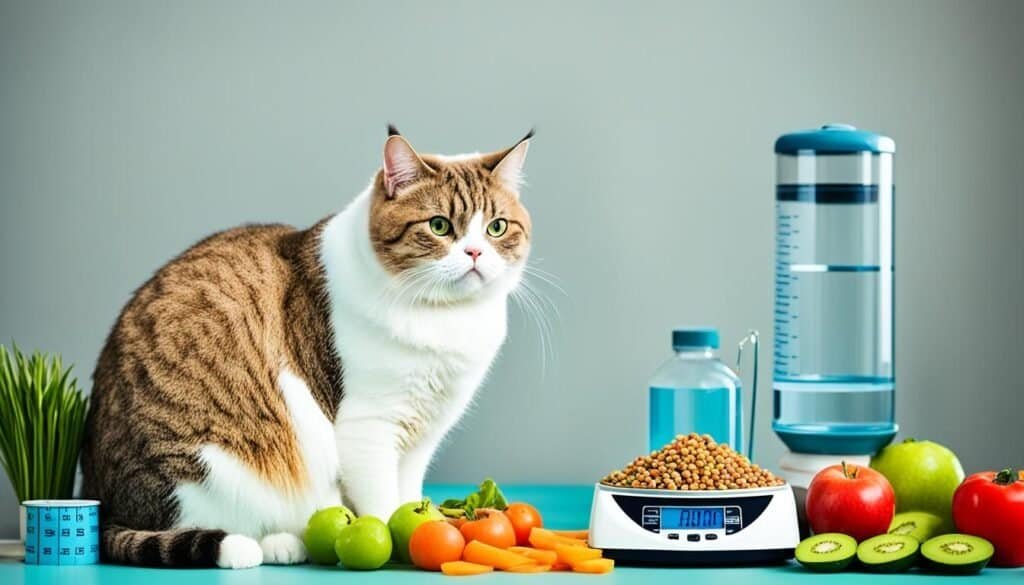
The Benefits of Cat Weight Management
Managing a cat’s weight can have numerous benefits for their overall health and wellbeing. Maintaining a healthy weight helps reduce the risk of obesity-related health issues and improves mobility and joint health. Cats at a healthy weight are also more energetic and less prone to lethargy, which can contribute to a higher quality of life.
| Benefits of Cat Weight Management | Obesity-related Health Issues | Improved Mobility and Joint Health | Energetic and Active Lifestyle |
|---|---|---|---|
| Reduced risk of arthritis | Prevention of diabetes | Decreased stress on joints | Enhanced playfulness |
| Lower urinary tract problems | Improved heart health | Increased agility | Greater endurance |
| Enhanced overall wellbeing | Lower risk of respiratory issues | Improved flexibility | Higher levels of activity |
By prioritizing cat weight management and following feeding guidelines, owners can help their cats achieve and maintain a healthy weight, promoting optimal health and longevity.
Cat Nutrition for Digestive Health
Good nutrition is essential for promoting a healthy digestive system in cats. A well-balanced diet can help regulate bowel movements, prevent constipation, and support overall digestive health.
Fiber plays a crucial role in maintaining a healthy digestive system in cats. It adds bulk to the stool, helps regulate bowel movements, and prevents constipation. Some cat foods are formulated with added fiber to support digestive health. These fiber-rich formulas can provide the necessary dietary fiber to promote optimal digestion and prevent common gastrointestinal issues.
Probiotics are another important component of cat nutrition for digestive health. Probiotics are beneficial bacteria that can help maintain a healthy balance of gut flora. They support the growth of beneficial bacteria in the digestive tract, aiding in digestion and nutrient absorption. Some cat foods already contain probiotics, while others offer probiotic supplements that can be added to your cat’s diet.
Incorporating fiber and probiotics into your cat’s diet can contribute to a healthy and well-functioning digestive system. However, it is important to consult with your veterinarian before making any changes to your cat’s diet or adding supplements. They can provide guidance on the appropriate amount of fiber and probiotics for your cat’s specific needs.
Best Cat Food Brands
When it comes to choosing the best cat food for your furry friend, it’s essential to opt for brands that prioritize quality and nutrition. Here, we have compiled a list of reputable cat food brands that are known for producing high-quality and nutritionally balanced cat food:
- Blue Buffalo: Blue Buffalo offers a wide range of cat food options made with real meat as the primary ingredient. Their formulas are carefully crafted to provide a complete and balanced diet for cats of all life stages.
- Hill’s Science Diet: Hill’s Science Diet is a trusted brand that focuses on science-based nutrition. Their cat food formulas are developed by veterinarians and nutritionists, ensuring they meet the highest standards of quality and nutritional integrity.
- Royal Canin: Royal Canin is a well-known brand that offers breed-specific cat food options tailored to the unique needs of different cat breeds. Their formulas provide precise nutrition for optimal health and wellbeing.
- Purina Pro Plan: Purina Pro Plan is a brand that emphasizes advanced nutrition for cats. They offer a variety of formulas targeting specific health concerns, such as urinary tract health or weight management.
- Wellness: Wellness is committed to producing high-quality cat food made with natural ingredients and no artificial additives. Their recipes are formulated to support a cat’s overall health and vitality.
These brands have a solid reputation for delivering nutritionally complete and balanced cat food options. They prioritize sourcing high-quality ingredients and follow stringent manufacturing processes to ensure your cat receives the best possible nutrition. Additionally, all of these brands are AAFCO-approved, meaning they meet the nutritional standards set by experts in feline nutrition.
Consulting with Veterinarians and Reading Reviews
While the brands mentioned above are highly regarded, it’s always a good idea to consult with your veterinarian before making any changes to your cat’s diet. They can provide personalized recommendations based on your cat’s specific needs and health conditions. Additionally, reading customer reviews and feedback can help you gauge the palatability and effectiveness of different cat food brands.
Remember, finding the best cat food brand for your feline companion may require some trial and error, as each cat has unique preferences and dietary requirements. By focusing on reputable brands and choosing nutritionally complete and balanced options, you can provide your cat with the high-quality food they deserve.
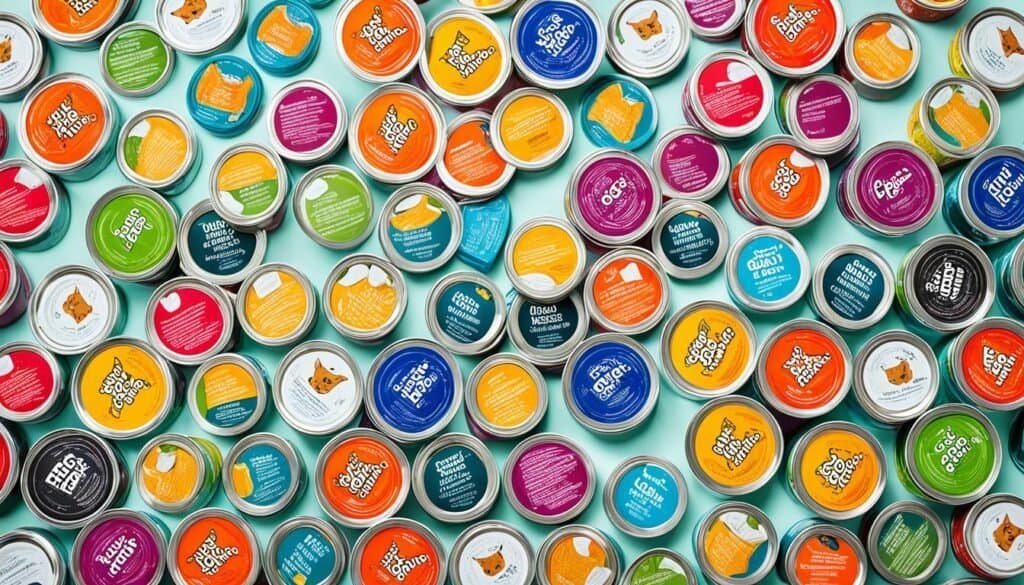
| Brand | Key Features |
|---|---|
| Blue Buffalo | Real meat as the primary ingredient |
| Hill’s Science Diet | Developed by veterinarians and nutritionists |
| Royal Canin | Breed-specific formulas |
| Purina Pro Plan | Advanced nutrition for specific health concerns |
| Wellness | Natural ingredients, no artificial additives |
Cat Nutrition Tips for a Healthy Lifestyle
Providing your cat with a balanced diet is essential for their optimal health. However, there are additional cat nutrition tips that can contribute to their overall well-being. By following these guidelines, you can ensure that your furry friend enjoys a healthy lifestyle:
- Portion control: Avoid overfeeding your cat and maintain portion control. Obesity can lead to various health problems, so it’s important to follow the recommended feeding guidelines based on your cat’s age, size, and activity level.
- Hydration: Cats need access to clean and fresh water at all times. Incorporating wet food into their diet can help ensure they receive adequate hydration. Consider adding wet food as a complement to dry food to encourage water consumption.
- Balanced diet: Provide your cat with a nutritionally balanced diet that meets their specific dietary needs. Consult with your veterinarian to ensure that your cat’s diet contains all the necessary nutrients in the right proportions.
Regular veterinary check-ups are also essential for monitoring your cat’s nutritional status and overall health. Your veterinarian can provide personalized recommendations based on your cat’s specific needs and help address any concerns related to their diet. By following these cat nutrition tips, you can promote a healthy lifestyle and enhance the well-being of your beloved feline friend.
| Cat Nutrition Tips for a Healthy Lifestyle | |
|---|---|
| Portion Control | Prevent overeating and obesity by practicing portion control. |
| Hydration | Ensure access to clean and fresh water at all times and consider incorporating wet food for hydration. |
| Balanced Diet | Provide a nutritionally balanced diet that meets your cat’s specific dietary needs. |
The Importance of Cat Nutrition
Proper cat nutrition is essential for maintaining their overall health and wellbeing. A well-balanced diet acts as a form of preventative medicine, reducing the risk of various diseases and complications. By providing cats with the right nutrients in the correct balance, owners can help their feline companions live longer and lead healthier lives.
Cat nutrition plays a crucial role in disease prevention. A nutrient-rich diet supports the immune system, helping cats fight off infections and illnesses more effectively. Nutritional deficiencies can weaken the immune system, making cats more susceptible to diseases. By providing cats with a diet that meets their nutritional needs, owners can help strengthen their immune system and reduce the risk of illness.
Feline nutrition also contributes to the overall health and vitality of cats. A balanced diet promotes healthy growth and development in kittens and helps adult cats maintain optimal body condition. It provides cats with the energy they need to engage in physical activities and promotes healthy muscle tone. Additionally, proper nutrition supports organ function and contributes to healthy skin and coat.
To ensure optimal cat nutrition, owners should consult with a veterinarian. A veterinarian can provide guidance on choosing the right cat food, considering factors such as the cat’s age, weight, and health condition. They can also recommend feeding guidelines and portion sizes to prevent overeating and obesity. Regular veterinary check-ups allow for monitoring the cat’s nutritional status and addressing any potential concerns.
Feeding Guidelines for Cats
- Feed a nutritionally balanced cat food that meets the standards set by reputable organizations such as the Association of American Feed Control Officials (AAFCO).
- Choose cat food that contains high-quality animal protein sources to meet the cat’s obligate carnivore needs.
- Avoid feeding excessive treats or table scraps, as they can lead to nutrient imbalances and weight gain.
- Ensure cats have access to clean and fresh water at all times to support hydration and overall health.
Proper cat nutrition is a proactive approach to maintaining their health and preventing future health issues. By providing cats with a balanced and nutritious diet, owners can significantly contribute to their overall well-being and longevity.
| Disease Prevention | Overall Health & Vitality | Consult with a Veterinarian |
|---|---|---|
| · Strengthens the immune system · Reduces the risk of illnesses |
· Supports healthy growth and development · Promotes optimal body condition · Provides energy for physical activities |
· Guidance on choosing the right cat food · Feeding guidelines and portion control · Regular monitoring of nutritional status |
Conclusion
Optimal cat nutrition and diet are key factors in maintaining the health and wellbeing of feline companions. Cats, being obligate carnivores, have specific nutritional requirements that must be met to ensure their overall health. It is important for cat owners to choose the right cat food based on the life stage of their furry friends, the quality of ingredients, and the nutritional content.
Providing wet cat food can contribute to hydration, which is essential for preventing dehydration and promoting urinary tract health. Homemade diets, if chosen, should be formulated with guidance from a veterinarian to ensure a balanced and complete diet. Weight management should also be a priority, as obesity can lead to various health issues.
When it comes to cat nutrition, selecting reputable cat food brands that meet the nutritional standards set by organizations like AAFCO is crucial. By following proper nutrition tips and guidelines, cat owners can support a healthy lifestyle for their feline companions, helping them live longer and happier lives.
FAQ
What are the essential nutritional needs of cats?
What types of commercial cat food are available?
How do I choose the right cat food?
What are the benefits of wet cat food?
Can I feed my cat homemade food?
How can I manage my cat’s weight?
How can I promote digestive health in my cat?
What are some recommended cat food brands?
What are some cat nutrition tips for a healthy lifestyle?
Why is cat nutrition important?
Last modified: February 19, 2024

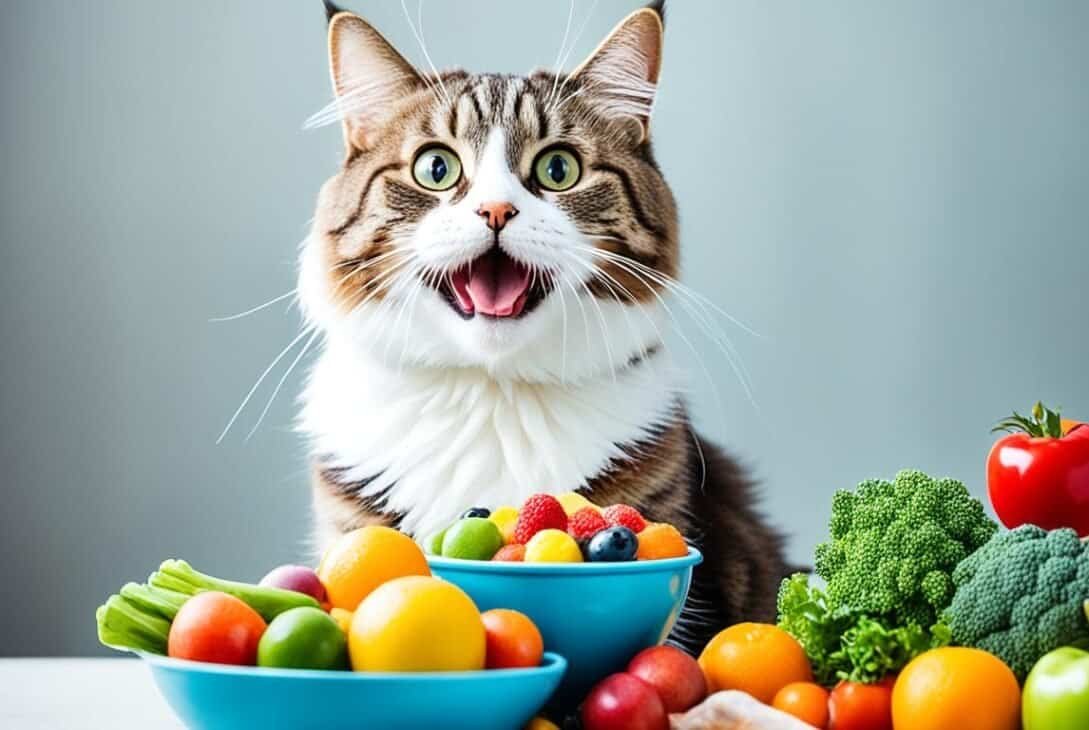
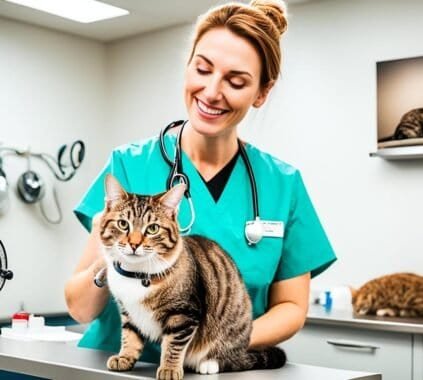
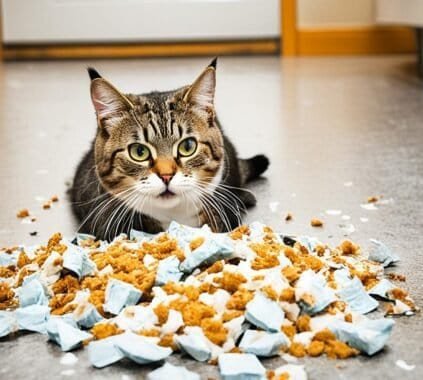
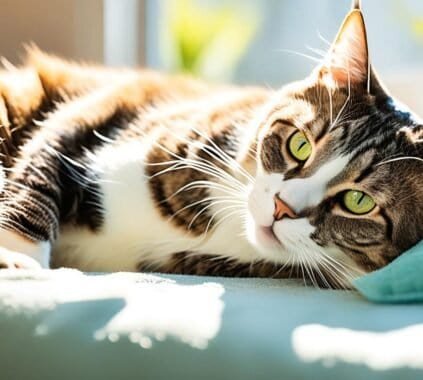
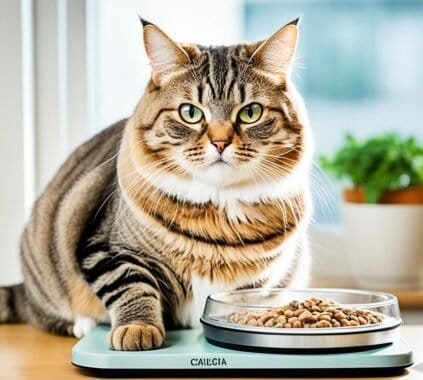

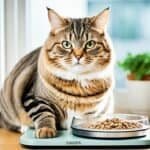






[…] cat health check-ups are crucial for maintaining the overall well-being of your feline friend. These check-ups allow veterinarians to closely monitor your cat’s health and detect […]
[…] promote dental health by reducing plaque and tartar buildup. By including dental treats in your cat’s diet, you can help maintain their healthy teeth and gums. Additionally, dental treats often come in […]
[…] cat to rest and recover. Ideally, this area should be quiet and free from any stressors. Offer your cat food and water to keep them hydrated and […]
[…] cat nutrition guide advises opting for wet food over dry food, as it provides the necessary moisture and a […]
[…] dental care and early detection of dental problems are essential for maintaining your cat’s oral health. By recognizing the signs of bad breath and addressing it promptly, you can prevent the progression […]
[…] clean animals and prefer a clean and odor-free environment for eliminating waste. Here are some essential tips to ensure your cat’s litter box experience is pleasant and […]
[…] the language of tails is an essential aspect of decoding feline body language and enhancing your ability to communicate with you…. By paying attention to their tail signals, you can foster a deeper understanding and strengthen […]
[…] a safe place where the cat can retreat to if they become frightened is essential. This will provide them with a sense of security and comfort. Rewarding social behavior and […]